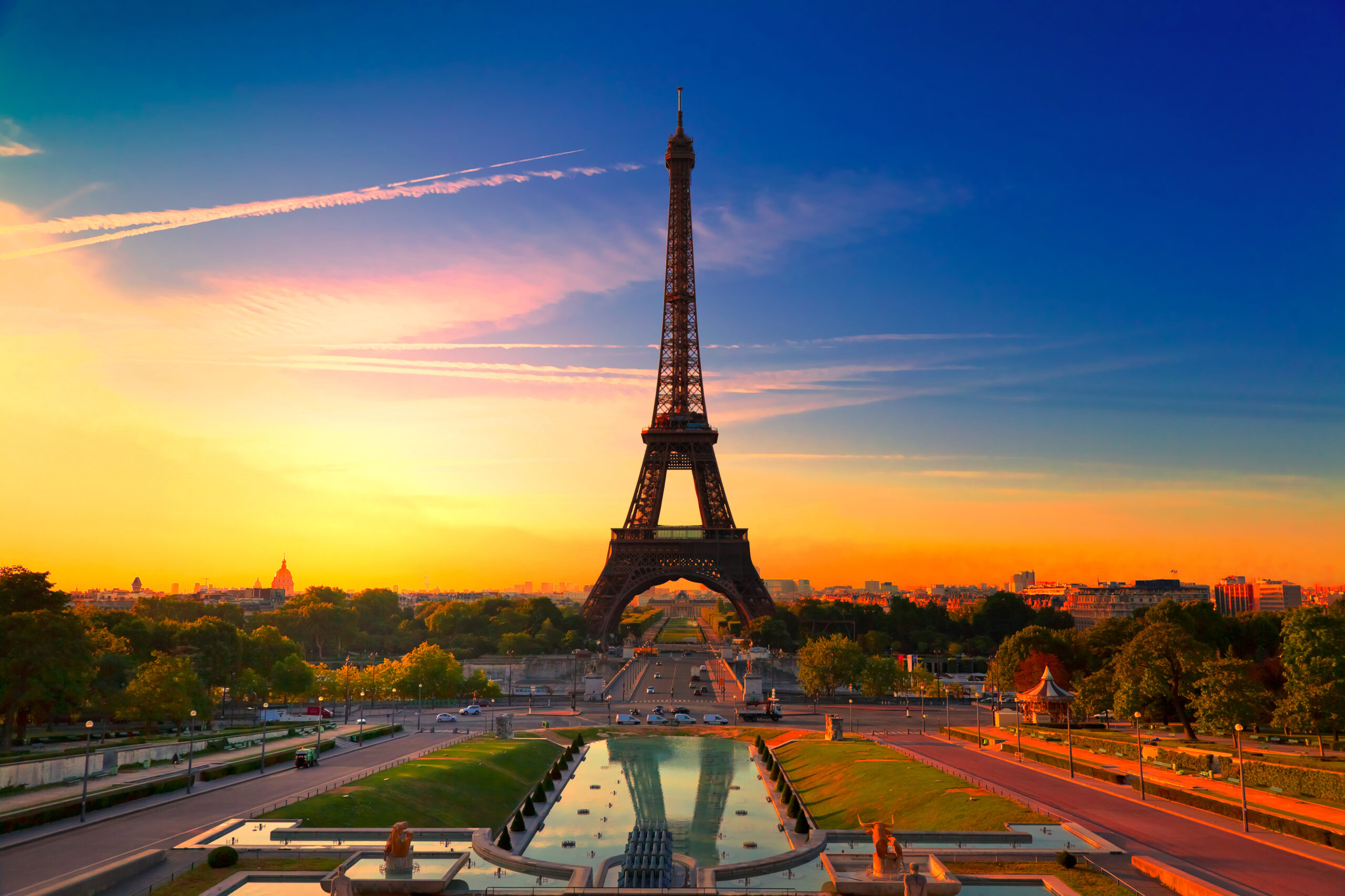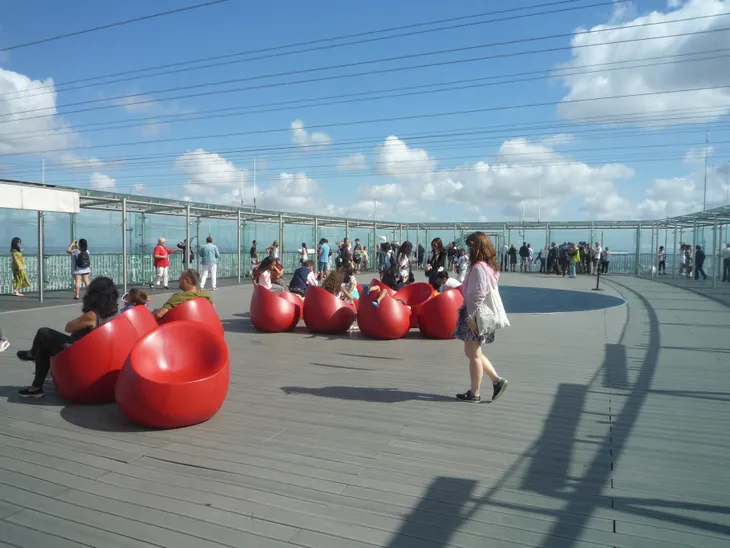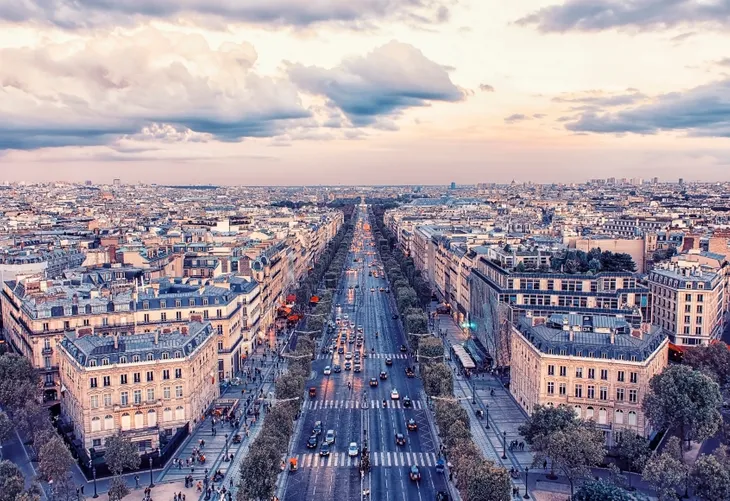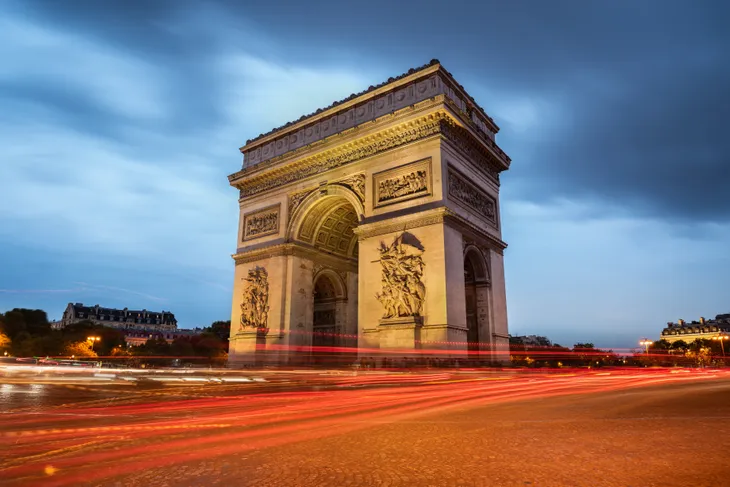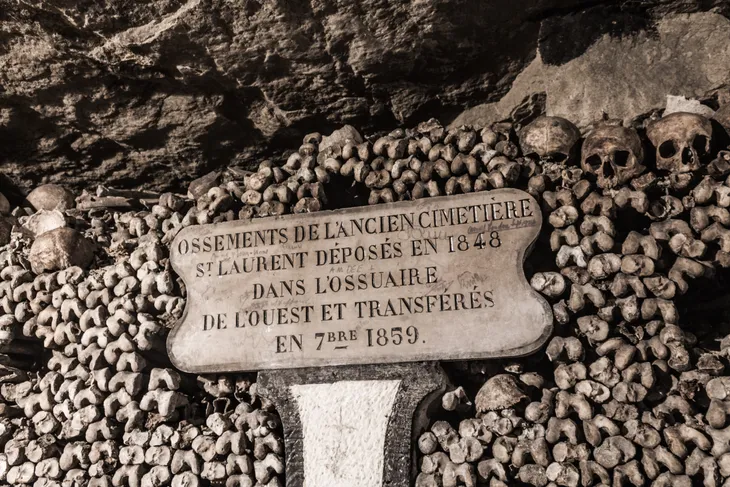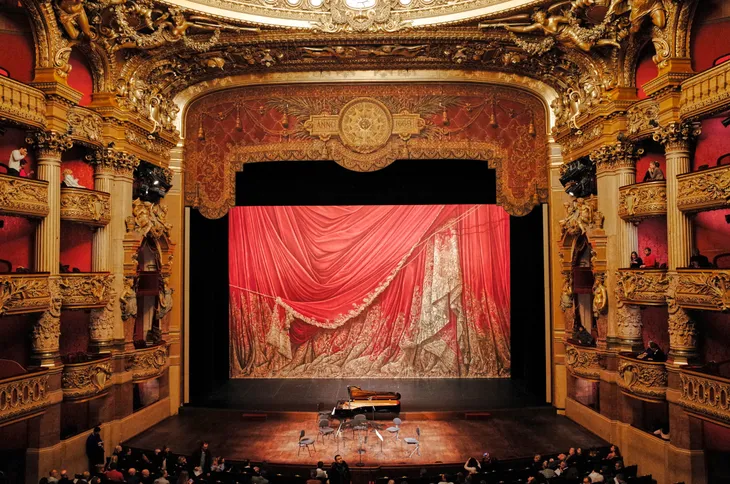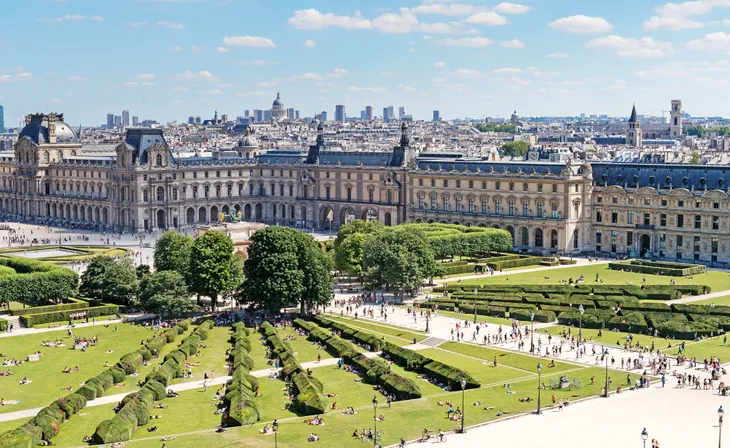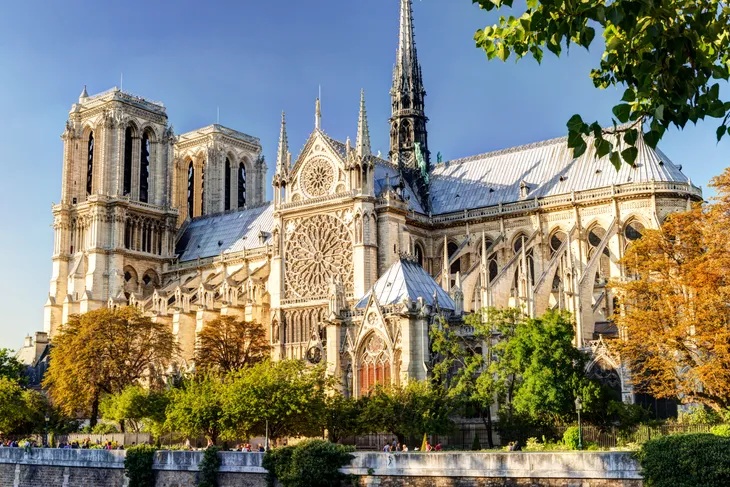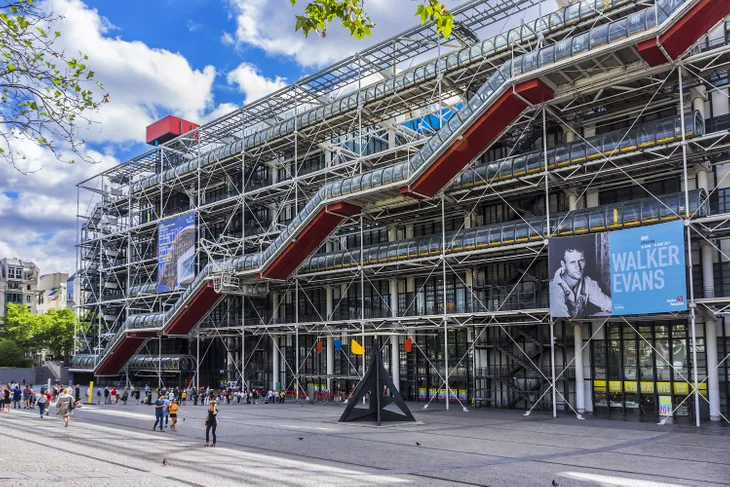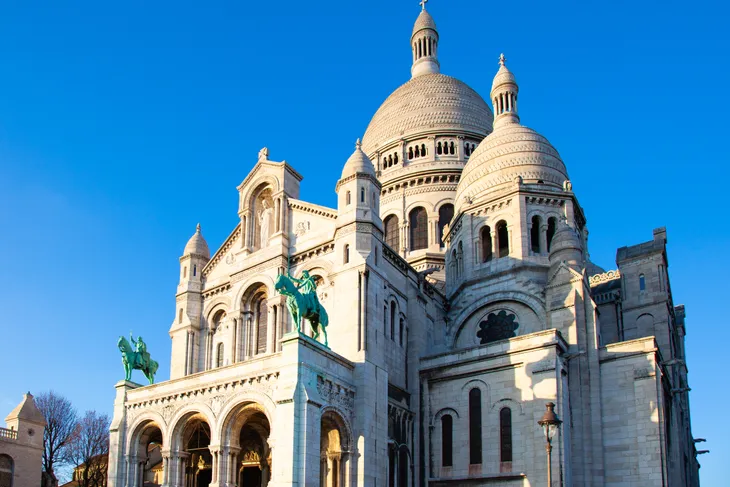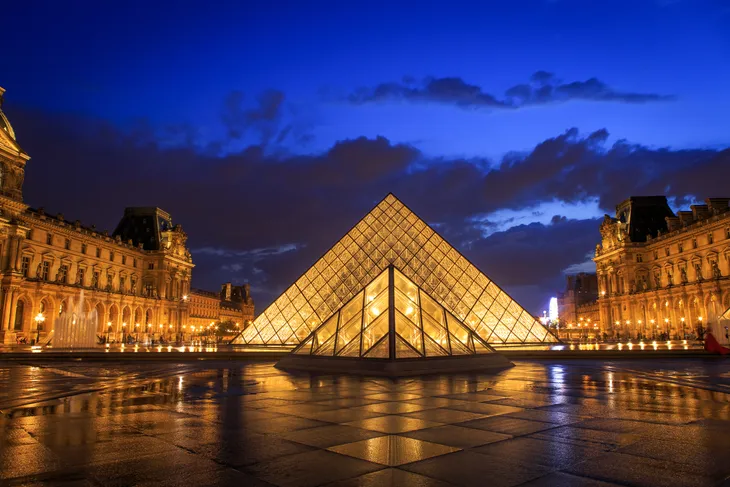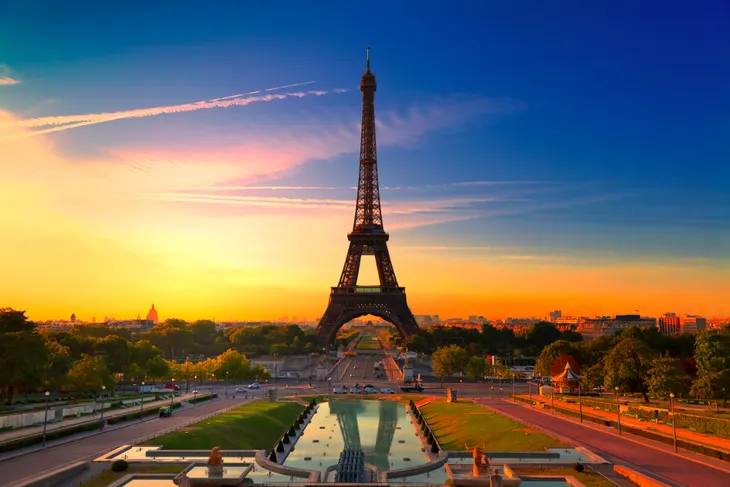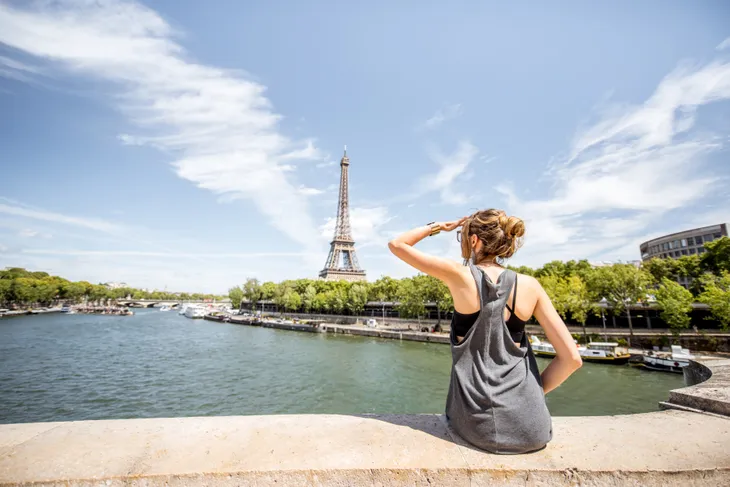Paris is one of the most famous cities in the world, and with good reason. The ‘City of Lights’ is a dream travel destination for many people, which makes sense considering how much there is to see and do there. The city is one of Europe’s premier tourist attractions, with a strong mix of incredible history, brilliant culture, and general beauty.
There are, of course, the popular tourist attractions like the Eiffel Tower and the Louvre. (Don’t worry, they easily made this list.) However, there are also dozens of lesser-known Paris attractions that can help make your visit a memorable one.
12. Montparnasse Tower Observation Deck
There’s a lot to see in Paris, and you can pretty much see it all from the Montparnasse Tower Observation Deck. It stands over 650 feet high and you can see 25 miles in every direction (on a clear day, at least). The floor-to-ceiling windows give you an incredible view of the entire city, including a unique vantagepoint of the Eiffel Tower itself.
You can visit during the day, but the city is especially beautiful after dark when it’s all lit up. There’s a special “Day and Night” pass that actually allows for two visits — one while the sun is up, and another once its set. Tickets range from about $10 to $26, depending on the day and time you want to visit. We recommend buying tickets in advance to avoid the lines.
11. Champs-Élysées
The Champs-Élysées is a one-stop-shop for all your spending needs. You’ll find a wide variety of stores on Paris’ most famous street — from luxury brands like Louis Vuitton and Versace, to more affordable names like Gap or Nike. There’s literally something for everyone here.
The Champs-Élysées is one of Paris’ most popular spots, so expect heavy crowds. It’s also not the place to go for a bargain, since most prices are higher than average due to the high tourism demand. Still, it’s a great place to browse, grab a drink or a meal, window shop, or just people watch. It’s located right near multiple Metro stations. The Arc de Triomphe marks the Western end of the Champs-Élysées, which is another site worth seeing on its own.
10. Arc de Triomphe
The Arc de Triomphe is an amazing monument, situated right in downtown Paris. It was commissioned by Napoleon himself, to honor the Grande Armee. The Arc features several beautiful sculptures and tributes to various historical wars. Most notable, perhaps, is the Tomb of the Unknown Soldier — meant to represent all the unidentified or unaccounted for soldiers who were lost in WWI.
You can simply admire the Arc from outside for free. For a closer look, you can buy a cheap ticket and go inside. The view from the top is spectacular. Be warned, though, that it’s a serious stair climb to the top. We also don’t recommend you try crossing the street to get to the Arc, since it’s a major intersection where multiple roads converge. Instead, use the tunnel in the nearby Metro station that takes you directly to the base of the Arc.
9. Paris Catacombs
Paris may be considered one of the romantic cities on the planet, but there’s also a dark side lingering right underneath it — quite literally. The Catacombs are a series of underground tunnels that house the remains of over six million bodies. It’s a result of having to relocate numerous cemeteries as the city expanded in the last 18th century.
The Catacombs are spooky, but a must-visit for anyone interested in all things morbid or gruesome. Unfortunately, only a small section of the Catacombs are open to the public. It’s illegal to be down there anywhere else. Plan ahead, since the Catacombs features uneven (and often slippery) terrain. The tunnels are also only about five feet tall.
Admission to the Catacombs can cost up to $35, but it’s free for those 17 and younger. You can buy tickets ahead of time on the Catacombs website to avoid longer wait times.
8. Palais Garnier
The Palais Garnier is the world famous Paris Opera House. It was built centuries ago and still maintains its opulent atmosphere after all these years. It’s also partly the inspiration for Gaston Leroux’s iconic “Phantom of the Opera” — due to a series of real unfortunate incidents at the Palais Garnier.
We highly recommend springing for tickets to a ballet or opera performance. You don’t even have to understand French to appreciate the majesty and artistic merit of these performances. However, they are quite expensive and require planning several months ahead. If you can’t see a show, you can still pay a (much cheaper) fee just to tour the Opera — either by yourself or with a guided tour.
7. Musée d’Orsay
Sure, there’s a much more famous museum to visit in Paris. We’ll get to that in a few minutes. But the Musée d’Orsay should not be ignored either. It’s the home of original impressionist works from Degas, Monet, Cezanne, Van Gogh, and many others. The Musée de l’Orangerie is simply an extension of d’Orsay, and also worth a visit. You’ll find Monet’s famous “Water Lilies” paintings there.
These museums may not be as famous as the Louvre, but you’ll love the smaller crowds, cheaper entrance fees, and diverse artworks — there’s also sculptures and photography exhibits. Consider booking your tickets ahead of time, as the museum is open every day except Mondays.
6. Jardin des Tuileries
The Jardin des Tuileries is a massive 55-acre public garden space. It was originally designed to be used exclusively by the French Royal Family, but has actually been open to the public since the 17th century. While it’s a beautiful green space in the middle of a major city, the garden is also rich with history. The garden used to host diplomatic meetings with foreign dignitaries and Napoleon and Marie-Louise had their wedding reception travel through it.
These days, you can enjoy a picnic or a leisurely walk/bike ride in the park. The garden is centrally located near other major attractions, like the Louvre, the Palace de la Concorde, and the Musée d’Orsay. You’ll also find a number small cafes in the garden, plus a quaint bookstore and a carousel ride.
5. Notre-Dame Cathedral
Unfortunately, an infamous fire in April 2019 did major damage to one of Paris’ most famous landmarks. The Notre-Dame Cathedral is undergoing extensive repairs and likely won’t re-open to the public until at least 2024. However, it’s still worth mentioning, since it’s one of the most recognizable icons in Paris.
The Cathedral was first built in the late 10th century, over 1,000 years ago. Amazingly, it took almost 200 years for construction to be considered finished. The intricate architecture alone makes Notre-Dame worth a visit. Of course, the Victor Hugo literary classic The Hunchback of Notre-Dame also plays a part in people wanting to visit — especially the bell tower.
There was no cost to visit Notre-Dame before the fire, which was both a blessing and a curse. The lack of cost meant it was almost always crowded — up to 13 million visitors per year. We’re looking forward to visiting again, once the repairs are complete.
4. Centre Pompidou
While classic artworks from centuries past are always worth appreciating — and Paris certainly has lots — the Centre Pompidou offers something for fans of modern art. You’ll find all sorts of contemporary art pieces here, including cubist, surrealist, and pop art. There are more than 100,000 pieces to view, including popular artists like Matisse, Picasso, and Andy Warhol.
The building (and the entire atmosphere) is a bit a unique. It certainly doesn’t feel like “classic Paris” when you’re visiting. However, it’s more than worth your time if you want to check out some of the city’s more modern cultural showcases. Entry tickets are only around $20 (although that might not include entry to any special travelling exhibits) and the Center Pompidou is easily accessible via multiple Metro stops.
3. Sacred Heart Basilica of Montmarte
This beautiful white church towers above the Paris neighborhood of Montmarte. It’s a sight to behold, both inside and out. On the exterior, the ivory domes make it instantly recognizable. Once you get inside, you’ll be treated to a ceiling with the largest mosaic in France, depicting Jesus, the Virgin Mary, and Joan of Arc.
If you climb the many (many!) steps to the top of the main dome, you’ll enjoy a breathtaking view of the city below. You should know, however, that the Sacred Heart Basilica remains an active place of worship. It holds full mass services multiple times per day. So make sure your visit is timed in a way to be respectful. Visiting the basilica is entirely free, so expect crowds unless you arrive early.
2. The Lourve
The Musée du Louvre (or just The Louvre) is one of the most famous museums on the planet. It’s widely considered to be the home of the very best art ever produced, including Leonardo da Vinci’s captivating “Mona Lisa.” Of course, there are 35,000 other pieces of brilliant artwork to see while you’re there, including pieces from other famous names like Delacroix, Rembrandt, and Géricault.
The Louvre itself was originally the royal residence of French rulers, including Louis XIV. After he shunned the Louvre in favor of the Palace of Versailles, the building was converted into a museum. It’s actually been open since 1793.
Admission to the Louvre isn’t expensive, but it’s often very crowded (especially around the “Mona Lisa”, which is a smaller painting than you expect). Try to go on off-peak times, if you can. The place is massive (more than 650,000 square feet), so a visit can easily fill your entire day.
1. Eiffel Tower
What else could top our list of things to see in Paris except for the iconic Eiffel Tower? Sure, it’s predictable — but nothing else represents the City of Lights like its most famous building. Originally constructed for the 1889 World’s Fair, the Tower was meant to be temporary. Instead, it turned into a useful tool for intercepting and broadcasting wireless transmissions — something that became especially important during wartime.
Today, the Eiffel Tower is still used for broadcasting, but mostly exists as a symbol of Paris for people to visit. You can simply admire the Tower from the ground or take the elevator up to the top for a spectacular view. The Tower is particularly beautiful at night, where thousands of flickering lights make the Tower appear to sparkle before your very eyes.
Obviously, you should expect huge crowds at almost every time of the year. The Eiffel Tower is one of the most visited tourist attractions in the entire world. You can bypass some of the lines by ordering your tickets online ahead of time. Regardless of the cost or the wait, no trip to Paris is complete without checking out the Eiffel Tower.
Bonus: Chill By The Seine River
The Seine River is an attraction that you need to buy tickets for, but that’s the beauty of it. The river, which flows directly through the heart of the City of Lights, is one of the most famous waterways in the world. Pick any one of Paris’ 37 different bridges for a stunning photo op. Or just grab a coffee and a snack from a local café, and then find a peaceful spot by the water to enjoy them. Not everything needs to be buying tickets and waiting in line, after all.
The Seine can also be enjoyed via a boat tour, which is a great way to see the entire city. The river itself was named a UNESCO World Heritage Site in 1993, due to its importance to Paris — the waterway is a major transportation route for shipping and was also a major fishing source for the city, dating all the back to the 3rd century.
